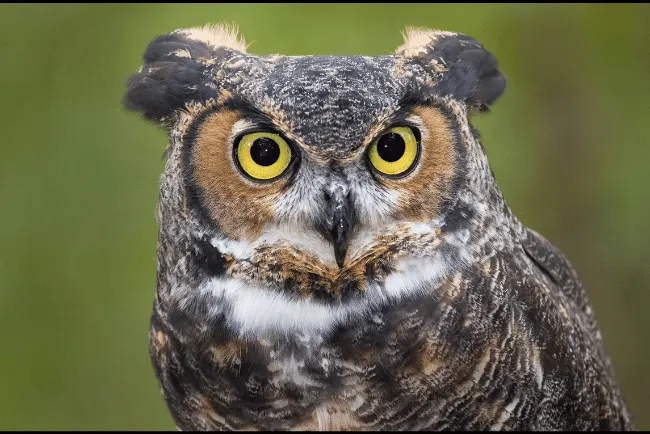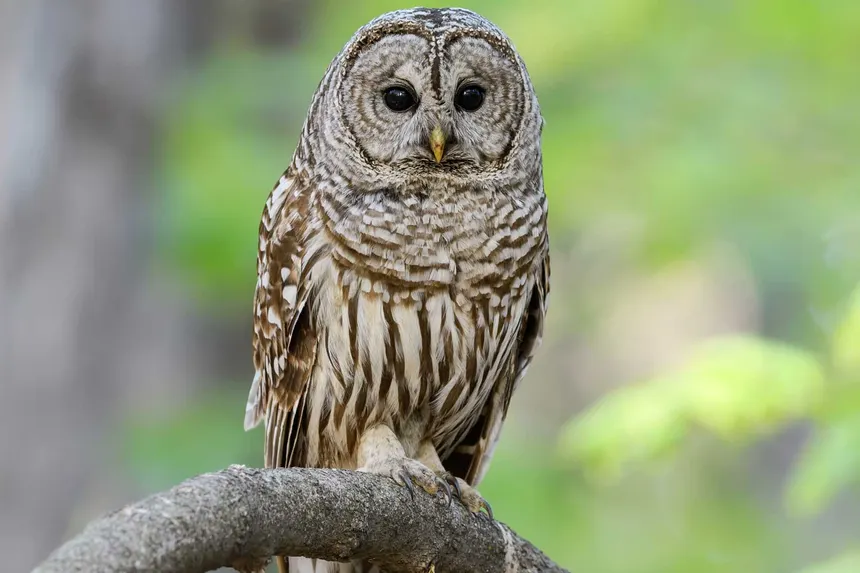“20 Fascinating Facts About Owls”

Owls are among the most recognizable and mysterious birds in the animal kingdom. Known for their large eyes, silent flight, and eerie hoots, these nocturnal predators play crucial roles in ecosystems around the world. From ancient mythology to modern wildlife conservation, owls continue to captivate human imagination. Here are 20 incredible facts that reveal just how unique and amazing these birds truly are.
1. There Are Over 200 Owl Species
Owls are incredibly diverse. With over 200 known species, they are found on every continent except Antarctica. Their sizes range from the tiny elf owl (5 inches tall) to the massive Blakiston’s fish owl, with a wingspan of over 6 feet.
2. Owls Are Silent Flyers
One of the owl’s most famous features is its silent flight. Specialized feathers reduce air turbulence and muffle sound, allowing them to swoop down on prey without being heard.
3. They Can Rotate Their Heads Up to 270 Degrees
Owls cannot move their eyes, so they compensate by rotating their heads an impressive 270 degrees, thanks to 14 neck vertebrae—double the number in humans.
4. Their Eyes Are Tubes, Not Spheres
Owl eyes are elongated tubes, giving them incredible depth perception and night vision, but they can’t move in their sockets. This is why neck flexibility is so essential.
5. Owls Are Not Always Nocturnal
While many owls hunt at night, some species, like the burrowing owl and short-eared owl, are diurnal or crepuscular, meaning they’re active during the day or at dusk and dawn.
6. They Swallow Prey Whole
Owls often swallow small prey whole, digesting the soft parts and later regurgitating indigestible parts—like bones and fur—as compact pellets.
7. They Are Masters of Camouflage
Owl feathers are often colored to blend in with tree bark, leaves, or the ground, making them nearly invisible when roosting during the day.
8. Owls Have Zygodactyl Feet
They have two toes pointing forward and two backward, perfect for gripping prey tightly. They can also swivel one toe to improve grip while perching.

9. Female Owls Are Usually Larger
In many owl species, females are bigger and heavier than males. This may help them defend the nest and incubate eggs more effectively.
10. They Have Facial Discs That Help Them Hear
Owl faces are shaped like satellite dishes, directing sound toward their ears. Some species, like the barn owl, can hear a mouse moving under snow or grass.
11. Not All Owls Hoot
Although hooting is common, owls make a wide range of sounds: screeches, whistles, barks, and even hissing. Each species has its own vocalizations for territory and mating.
12. They Symbolize Wisdom and Death in Mythology
In Greek mythology, owls were sacred to Athena, the goddess of wisdom. But in other cultures, like some Native American or African traditions, owls are seen as omens of death or spiritual messengers.
13. Baby Owls Are Called Owlets
Young owls are called owlets. They are born blind and featherless, relying entirely on their parents for food and warmth in their early weeks.
14. Barn Owls Can Be Found on Every Continent Except Antarctica
Barn owls are one of the most widespread owl species, found in over 100 countries around the world. They are especially known for their heart-shaped faces.
15. Some Owls Can Hunt in Complete Darkness
Owls like the tawny owl can hunt in total darkness using only their sense of hearing. Their ears are often asymmetrical, allowing them to pinpoint sound in three dimensions.
16. They Have One of the Best Hearing Abilities in the Animal Kingdom
Owl ears are often hidden under feathers, but they are extremely sensitive—10 times more accurate than a human’s hearing in locating prey.
17. Owls Are Territorial
Most owls are strongly territorial, especially during the breeding season. Males often call repeatedly to warn other males away from their territory.
18. Urban Owls Are Becoming More Common
Some owl species, such as the Eastern screech owl or great horned owl, are adapting to urban environments, hunting rats and pigeons in city parks and backyards.
19. Owls Are Often Victims of Rodenticides
When owls eat rodents that have consumed poison bait, they can become sick or die. Conservation groups advocate for more natural pest control to protect these birds.
20. Owls Are Protected in Many Countries
Due to habitat loss and hunting, many owl species are protected by international laws. Organizations like the Owl Conservation Network help study and protect them worldwide.

Conclusion: More Than Just Night Birds
Owls are far more than spooky silhouettes in the night sky. They’re intelligent, adaptable, and vital to ecological balance. From ancient forests to bustling cities, they remind us of the mysteries of the natural world and the importance of protecting diverse wildlife.



